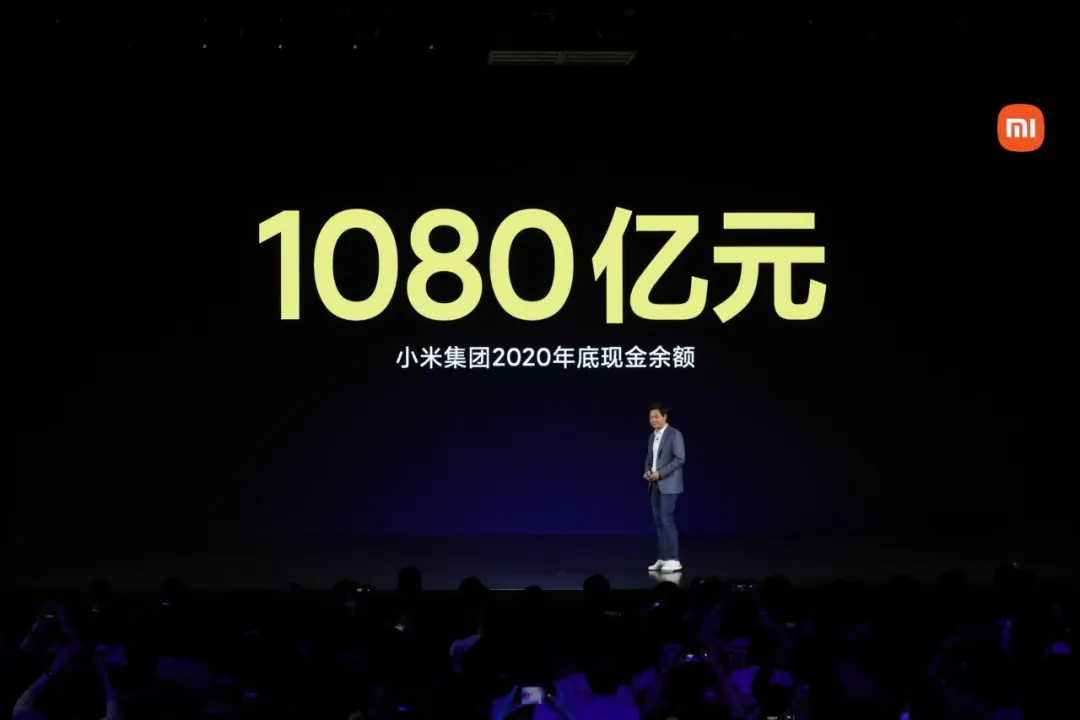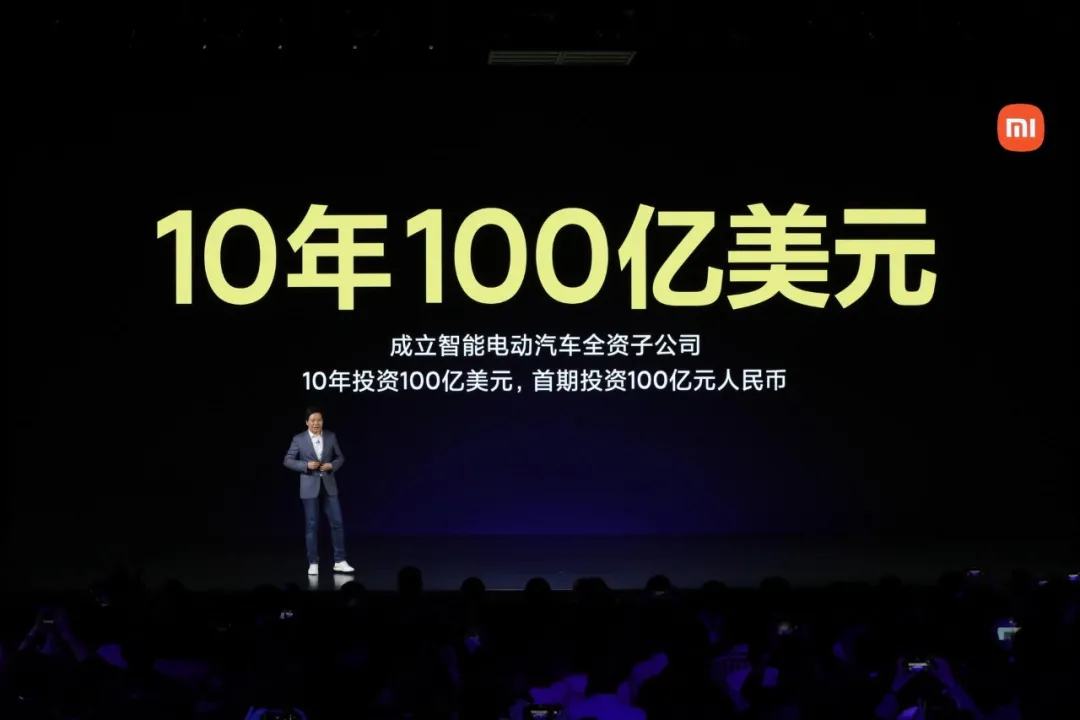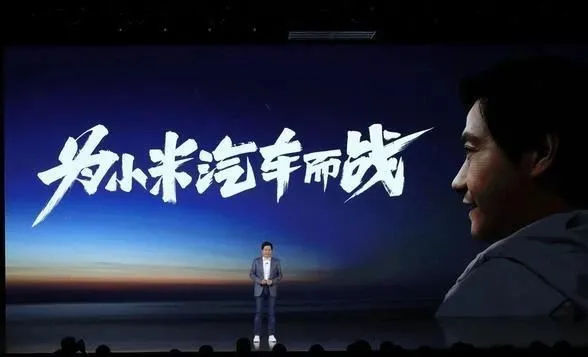Author: Office
On March 29th, at the Xiaomi Spring New Product Launch Event, Xiaomi founder Lei Jun officially announced that Xiaomi would enter the automobile industry.
Lei Jun was full of emotion in his speech, personally bet his honor, and regardless of whether you are a Xiaomi fan or not, as a Chinese technology company, Xiaomi is willing to go all out to enter the automobile industry, which makes people feel excited!
Most people are optimistic about Xiaomi, and some Xiaomi fans even said, “If you dare to make it, I will dare to buy it.”
But after the excitement subsided, we calmed down and thought about it, and had some concerns about Xiaomi’s foray into the automobile industry.
What does Lei Jun have to make a car? Will Xiaomi’s journey to make cars be so smooth?
Welcome to watch this video: “I Have Some Concerns About ‘Xiaomi Making Cars'”.
Is Lei Jun’s personal involvement an advantage for Xiaomi’s car-making?
In 2021, two Internet giants, Xiaomi and Baidu, announced the launch of car-making projects, but the public opinion aroused was drastically different. One important difference was that Baidu recruited professional managers to cooperate with Geely to make cars for “Jidu”.
“Jidu,” Baidu’s car-making project, hired former Mobike CTO Xia Yiping as CEO and former Airbus China Innovation Center CEO Luo Gang for key positions.
Xiaomi’s founder, chairman and CEO, Lei Jun, personally took charge as CEO of Xiaomi’s automotive division and led the team to the battle.
As we know, cars are the most complex product among mass-produced consumer products, interdisciplinary, capital-intensive, and with high technological thresholds. The industrial nature of the automobile industry means that a new car-making company must have too many important decisions that must be personally stamped by someone in control.
Whenever Tesla or NIO encountered a crisis, Elon Musk and Li Bin personally made critical decisions to reverse the situation.
Therefore, in the case of Xiaomi making cars, Lei Jun’s personal involvement appears to be a wise decision.## Looking Back at Xiaomi’s History
In 2016, Xiaomi faced serious challenges in supply chain management, with mobile products and production capacity posing challenges, leading to a continued decline in sales. It was only through the dismissal of Xiaomi’s co-founder, Zhou Guangping, and the takeover of mobile phone R&D and supply chain by Lei Jun, who personally visited Samsung in Korea to secure screens, that Xiaomi finally managed to bounce back from the bottom.
Against the backdrop of significant external pressure on Huawei’s mobile phones, Xiaomi has now returned to the top three in the world, in its best historical period.
But can Xiaomi’s mobile phone business really be worry-free now?
We still have to ask the question, if Xiaomi’s mobile phone business needs saving in the next three years, and the car-building business has just set off, which is in a critical moment, then the question arises:
If Xiaomi’s wife and mother do not know how to swim, and Lei Jun is the only one, which one would Lei choose to save first?
108 Billion, 10 Billion Yuan, and 10 Billion US Dollars
Lei Jun mentioned three numbers during the press conference – one regarding the 108 billion cash reserve in Xiaomi’s account, another being the first-phase investment of 10 billion yuan for Xiaomi’s car-building, and the ten-year investment of 10 billion US dollars.

How should we interpret these three numbers?
First of all, the cash reserve of 108 billion is definitely not low. In the first quarter of 2021, even market leader Tesla’s cash reserve was only $19.4 billion, which is less than 200 small targets compared to Xiaomi’s. This number far exceeds that of leading new car-making companies such as NIO, Ideal, and XPeng.
However, how much of the 108 billion can be used for Xiaomi’s car-making? Lei Jun has already provided his plan: Xiaomi’s car-building project will receive an initial investment of 10 billion yuan, and a ten-year investment of 10 billion US dollars.
Obviously, the 108 billion only represents the cash in the account, and it is not commercially logical nor practical to invest all the money in the car-building business. Therefore, regarding the investment in Xiaomi car-making, we need to pay more attention to the two 10 billion figures.

If we look at the financial environment of new car-making in recent years, we will find that both of these numbers are difficult to achieve.
First of all, what does “first-phase” mean in Lei Jun’s statement? In the new car-making industry, there has been a saying of “200 billion” in recent years.Translate the Chinese markdown text below into English markdown text in a professional manner, keeping the HTML tags inside the Markdown and only outputting the results.
To be specific, a new car company needs 20 billion Yuan to go from zero to one, from recruiting, establishing organizational structure, promoting the brand, design, research and development, supply chain, manufacturing, delivery, and service, until the first car is delivered and the first revenue is received.
If you search online, you can still find Li Bin’s famous quote “Don’t make cars without 20 billion” and this can be seen from NIO’s history of equity financing, not to mention the recent intense competition in the new car industry where labor costs have soared.
If Mr. Lei’s “Phase One” is equivalent to going from zero to one, then 10 billion Yuan is clearly not enough to spend. 10 billion USD over ten years, according to the latest exchange rate, is about 65.5 billion Yuan.
Let’s continue to compare the top three new car manufacturers – NIO, Ideal, and XPeng.
All three have been fundraising since 2015. Let’s see how much money they have raised by December 2020.
NIO raised 10.054 billion USD, XPeng 6.907 billion USD, and Ideal 5.071 billion USD.
Taking the median, the three companies have raised a total of 7.5 billion USD in financing in their fifth year, equivalent to about 49.1 billion Yuan.
If Xiaomi follows a similar trajectory, even if labor costs do not rise further, it will use up 75% of its ten-year plan in the fifth year. It is clear that this budget is insufficient if Xiaomi wants to create a product with cutting-edge technology. However, I believe that Xiaomi has sufficient funds and determination to do so.
However, the three numbers – the cash reserves of 108 billion Yuan, Phase One of 10 billion Yuan, and ten years of 10 billion USD – are clearly not the result of precise calculations by Xiaomi’s management and finance departments.
Especially the latter two figures seem more like marketing and brand value.
The First Battle is the Decisive Battle
In the live streaming on April 6, Mr. Lei briefly introduced Xiaomi’s strategy for their cars. Xiaomi’s car has no room for error. In Mr. Lei’s words, the first battle is the decisive battle for Xiaomi.
This means that, as external rivals such as Tesla, NIO, Ideal, and XPeng develop rapidly, and with Xiaomi’s old rivals, Apple and Huawei, also slowly entering the car industry, Xiaomi, as a latecomer, can no longer afford to make mistakes and must come out with a blow to defeat the enemy.
Is this strategy feasible?
We still need to make comparisons with previous cases.
Tesla had an 18-year head start over Xiaomi and is not comparable in terms of industrial maturity.So let’s go back to the top three new car makers. In fact, Li Xiang, the founder of Ideal Motors, expressed a similar view that all startup car makers have only one chance to make a move. You must do your best to convince the upstream and downstream supply chain.
Investing in a small company from scratch forces you to succeed rather than fail in your products.
However, looking back today at NIO, Ideal and XPeng’s respective first mass-produced cars, the ES8, ONE, and G3.
Without exception, they were forced to be recalled due to product defects after large-scale deliveries. This is difficult to explain as a coincidence. The only viable reason is that a car company has hundreds of different jobs, coming from different corporate systems and collaborating for the first time. It is difficult to focus 100% on all details of the product.
As a complex industrial product, a car integrates thousands of components. Any part failure can have far-reaching consequences. In the context of traditional OEM manufacturers shifting towards electrification, time is running out for Xiaomi.
Therefore, this is a seemingly passionate but very difficult strategy to put your first battle in your final battle.
Having said that, are we skeptical about Xiaomi’s foray into car manufacturing? No, quite the opposite. It is precisely because Xiaomi is Lei Jun’s last entrepreneurial endeavor in his successful career that we pay extra attention to Xiaomi’s car-making venture.
If Lei Jun really enters the car industry, he needs to write down the answer to each of the above issues in the future.
In addition, Xiaomi’s accumulation of hardware, marketing, brand, design, R&D, large-scale manufacturing, supply chain management, services and operations over the past ten years can to some extent help the development of Xiaomi’s car business.
Most importantly, Lei Jun has evolved from a pure software programmer 30 years ago to the CEO of the world’s third-largest smartphone maker, which shows his long-term sustainable evolution capacity. This is the core competitiveness of Xiaomi as an outsider to enter a new industry.
Best wishes to Lei Jun and Xiaomi.
This article is a translation by ChatGPT of a Chinese report from 42HOW. If you have any questions about it, please email bd@42how.com.
